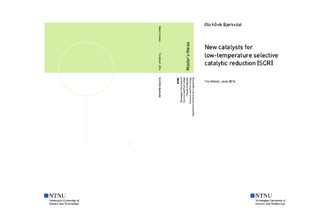| dc.description.abstract | Mesoporous alumina with a regular pore structure and high surface area was prepared using a sol-gel method with a structure-guiding surfactant. The typical diameter of the pores were measured to be 4-6 nm, with narrow pore size distributions. The alumina samples was found to have a typical specific surface area of 300 m^2/g
Modification of the acidic properties of the mesoporous alumina was attempted by introducing a solid acid, H3PW12O40 (abbrv. HPW). Alumina-HPW composites with HPW content of 25% and 50% was prepared by introducing HPW directly in the sol-gel synthesis. The composites had pore size similar to mesoporous alumina. High HPW content lead to decrease in pore volume and surface area.
The pore structure, composition and surface properties of the mesoporous alumina and alumina-HPW composites was characterized by BET, XRD, XRF and S(T)EM. Acidic properties were characterised by FT-IR with pyridine adsorption.
Mesoporous alumina was found to exhibit Lewis acidic character, which seemed to decline with decreasing alumina content for the composites. No indication of Brønsted acidic activity was found in the IR-spectra, but several factors indicate that contaminants like water have affected the measurements. Therefore, no conclusion regarding the effect of HPW on the acidity of the composite was reached. | |

